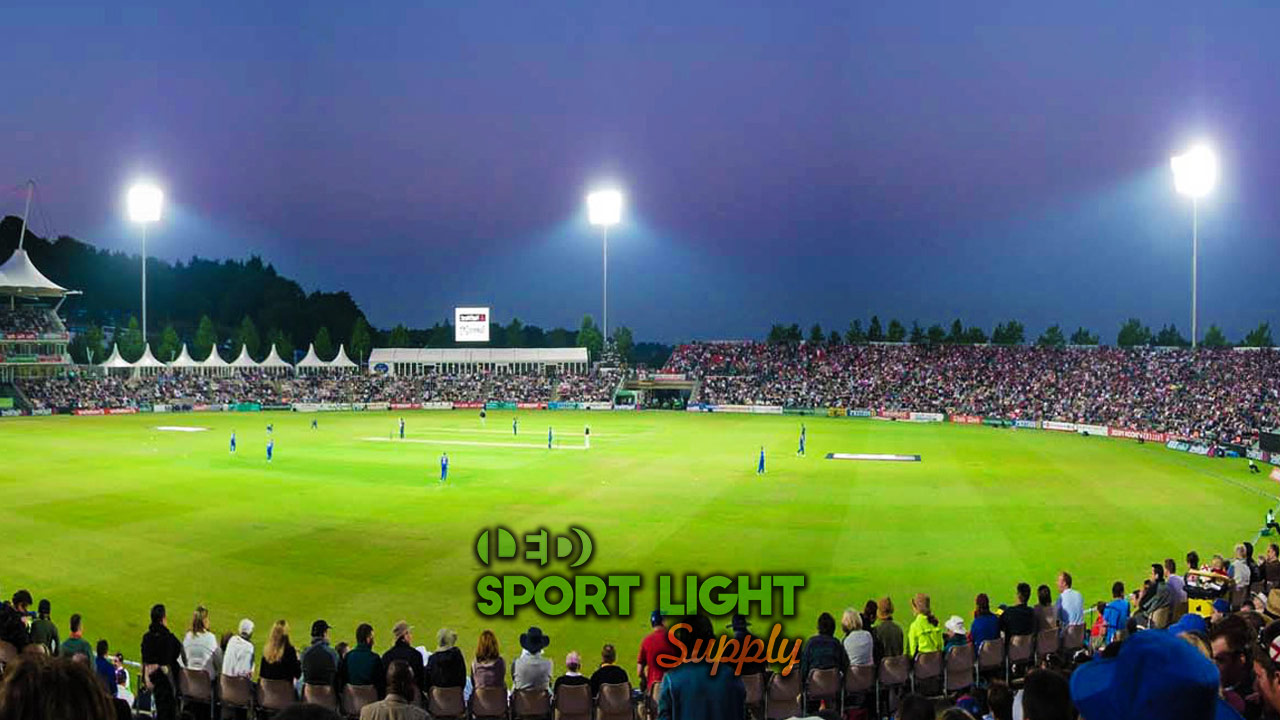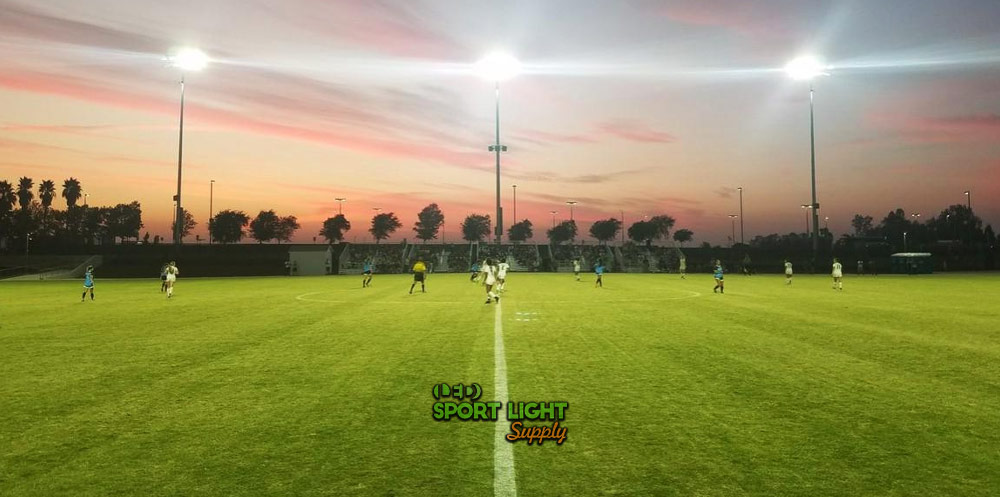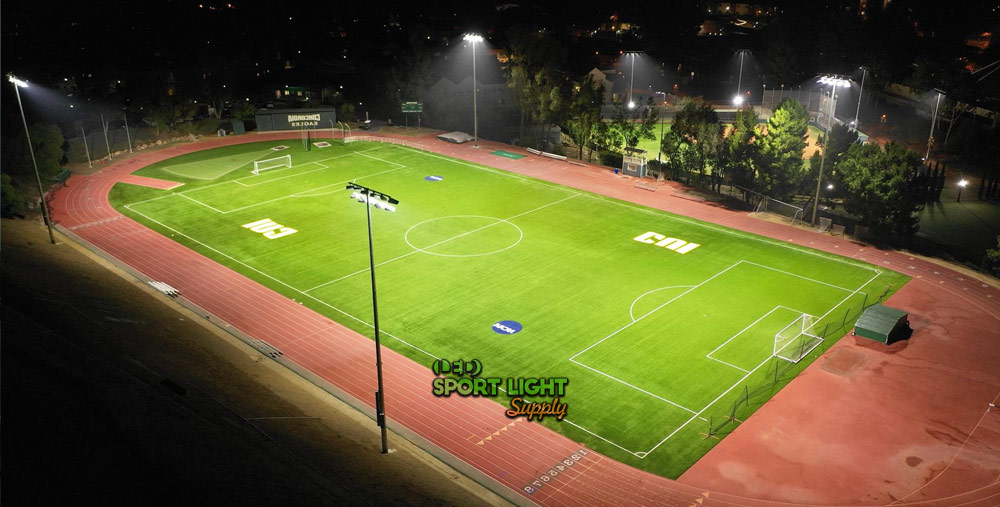This article explores key considerations for selecting the ideal LED lighting installation for your sports field. It aims to help you understand common terminology found in specifications provided by installers.
Proper lighting on a sports field offers numerous advantages for both players and fans. It facilitates easier game scheduling, enhances the overall fan experience, and potentially boosts attendance. However, it’s important to be mindful of the local community’s response, particularly from immediate neighbors who might be opposed to such changes. Additionally, there may be zoning regulations and ordinances governing glare levels near highways.
Consider whether a suitable power supply is available and if there is adequate space for positioning backlighting poles, which typically need to be set back between 50 to 100 feet. Also, ensure that access for heavy equipment during installation is feasible. Thoroughly understanding these aspects is crucial when evaluating sports lighting specifications.
Table of Contents
ToggleKey Specifications for Sports Lighting Installation
When selecting sports lighting, understanding various specifications is crucial to ensure optimal performance and compliance with standards. This guide explores important factors related to sports field lighting installation.
Lux Levels Requirement

The intensity of lighting on a sports field is measured in Lux using a light meter. Lux is defined as Lumens per square meter. The goal in sports lighting design is to achieve uniform illumination across the entire field.
Stadium and sports field lights are typically mounted at significant heights, ranging from 40 to 100 feet. These lights have narrow beam angles, which are influenced by their mounting height. Depending on the setup, there may be between 1 and 12 lights per pole.
Different levels of competition have specific lighting requirements:
| Class | Level of Competition | Football (Lux) | Tennis (Lux) |
|---|---|---|---|
| 1 | Top Level Competition | 500 | 500 |
| 2 | Intermediate Level | 200 | 300 |
| 3 | Lower Level/Training | 75 | 200 |
Broadcast events have their own lighting standards. For detailed standards, including diagrams and technical specifications, the NCAA website is a reliable resource.
Power and Lumen
Power consumption of bulbs is rated in watts, but for evaluating light output, Lumens are more relevant. Here’s a comparison of Lumens between traditional and LED bulbs:
| Lumens | Traditional Bulbs | LED Bulbs |
|---|---|---|
| 1530 | 100W | 9W |
| 2040 | 200W | 12W |
| 3400 | 350W | 20W |
| 8500 | 800W | 50W |
When comparing light sources, luminous efficacy is a key factor:
| Light Source | Luminous Efficacy (lumens per watt) |
|---|---|
| LED | 130 to 170 |
| Metal Halide | 60 to 75 |
| Halogen | 10 to 15 |
LEDs are significantly more efficient, providing greater illumination with less power.
Color Temperature
Color temperature, measured in Kelvin (K), affects the appearance of the light. For sports lighting, a color temperature of 5000K is recommended as it closely mimics natural daylight.
| Light Color | Color Temperature |
|---|---|
| Warm White | 2700 to 3000K |
| Natural Daylight | 4000K |
| Cool White | >5000K |
Selecting a color temperature of 5000K ensures better visibility and color rendering for sports activities.
Beam Angle
The beam angle of lights impacts how evenly the light covers the field. An appropriate beam angle minimizes dark spots and prevents glare.
Common beam angles for stadium lights include:
| Beam Angle Type | Angle Range |
|---|---|
| SP (Spot) | 4º to 19º |
| FL (Flood) | 20º to 35º |
| WFL (Wide Flood) | 36º to 49º |
| VWFL (Very Wide Flood) | 50º to 120º |
Stadium lights are usually mounted between 40 and 60 feet high, with beam angles from 12º to 60º. Narrower angles provide more intense light focused on a smaller area, whereas wider angles offer broader coverage.
Glare

Glare can significantly impact the visibility and quality of sports events. Traditional HID lighting fixtures often produce intense glare, similar to looking directly at the sun, which can affect both players and spectators. Modern solutions, such as anti-glare shields, can mitigate this issue by diffusing the light. However, many contemporary LED lights are designed to minimize glare naturally. These LEDs often feature a design where the light sources are arranged in a ring around a central section, reducing direct hotspots and glare.
In venues with TV coverage, glare from poorly designed lighting systems can cause problems with broadcast quality. LEDs are less likely to produce such issues compared to older lighting technologies, making them a better choice for venues with high visibility requirements.
LED Driver
The LED driver is a crucial component of any LED lighting system. It performs several important functions, including power conversion, load regulation, and protection of downstream components. Additionally, the LED driver is where smart technology and lighting controls are integrated.
LED lights require a constant direct current (DC) to operate correctly. If connected to an alternating current (AC) supply, LEDs can flicker and perform poorly. The LED driver converts AC power to the necessary DC power, ensuring stable operation and preventing flicker. In discussions about LED lighting, the terms “LED driver” and “LED power supply” are often used interchangeably, but both refer to the same essential component.
Heat Sinks
Although LED lights generate significantly less heat compared to traditional lighting options, they still require heat sinks to manage thermal output. Heat sinks are designed to conduct heat away from the LED junction and dissipate it into the surrounding air. Effective heat sinks are crucial for maintaining the longevity and performance of LED lights, as excessive heat can impact their efficiency and lifespan.
Pole Arrangements
The arrangement of lighting poles plays a significant role in achieving uniform illumination across the field. Here are common pole arrangements and their considerations:
Four-Pole Arrangement

In a four-pole arrangement, two poles are positioned on each side of the field. This setup typically requires poles to be placed farther from the sidelines to achieve comprehensive coverage. The lighting from each pole should overlap the coverage from adjacent poles to avoid hotspots and ensure even illumination.
Six-Pole Arrangement
A six-pole arrangement includes three poles on each side of the field. This configuration allows for poles to be positioned closer to the sidelines, which can help reduce glare and provide better coverage. As with the four-pole setup, the coverage from each pole should overlap with that of adjacent poles, and lights should be mounted at a minimum height of 50 feet for optimal performance. Higher mounting helps to reduce glare and improve overall lighting quality.
Ongoing Costs of Sports Field Lighting
Before proceeding with the installation of sports field lighting, it’s important to evaluate the ongoing operational costs associated with maintaining and running these lights. Understanding these costs can help you make a more informed decision about the best lighting solution for your field.
Cost of Operation
In the USA, the average hourly cost of operating stadium lights for four hours a night, across 15 nights per month, is significantly different depending on the type of lighting used. For LED lights, this cost is approximately $400 per month. In comparison, Metal Halide lights cost around $800 per month. This substantial difference highlights the cost-effectiveness of LED technology in reducing electricity expenses.
Maintenance Costs
Maintenance is another critical factor to consider. LED lights have a notable advantage over Metal Halide lights in terms of longevity. Typically, LED lights last up to eight times longer than Metal Halide lights. This extended lifespan translates to fewer replacements and lower maintenance costs. While Metal Halide lights generally last between 2 to 3 years, LED lights can endure for over 20 years, reducing the frequency of maintenance and associated costs.
Initial Investment vs. Long-Term Savings
Although LED lights often come with a higher initial cost, the savings on electricity and maintenance can quickly offset this investment. Over time, the lower running and maintenance costs of LED lights provide a more economical solution compared to outdated technologies. Investing in LED lighting not only improves the quality of illumination and reduces glare but also offers significant long-term financial benefits.
Final Thoughts
LED lighting offers superior performance for sports fields, including better efficiency, reduced glare, and lower ongoing costs. Understanding the specifications and cost implications of different lighting options is crucial for making an informed decision. We hope this guide has clarified the key aspects of sports field lighting and highlighted the advantages of choosing LED technology for both performance and cost-effectiveness.
